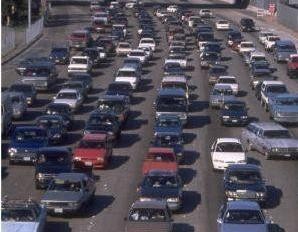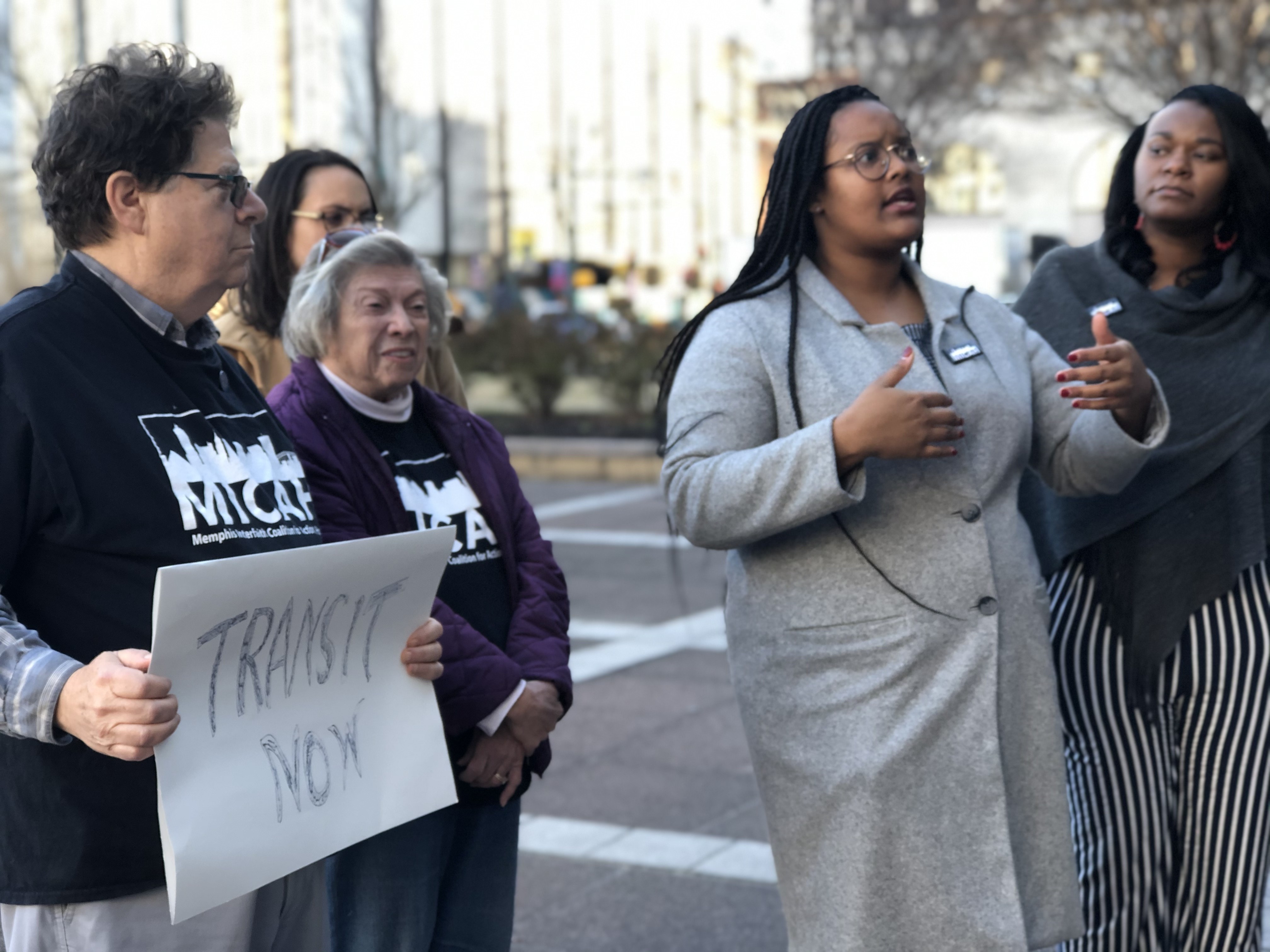 Maya Smith
Maya Smith
MICAH members gather to support $20 transit fee
Members of the Memphis Interfaith Coalition for Action and Hope (MICAH) gathered near city hall on Tuesday to show support for a Shelby County Commission resolution that would create a county transit fee to generate funds for the Memphis Area Transit Authority (MATA).
The resolution, sponsored by Shelby County Commissioners Willie Brooks Jr., Tami Sawyer, and Van Turner Jr., is an alternative to Shelby County Mayor Lee Harris’ plan to implement an annual fee of $145 for a households’ third vehicle. That plan, which would generate $10 million in funding for MATA each year, was first introduced by the mayor in September.
The proposed resolution seeks instead to increase the countywide motor vehicle tax, also known as the wheel tax, by $20 for every vehicle owner. The wheel tax was first established in 1987 and was dedicated to repaying the county’s bonded indebtedness. Then, in 2016, the county adopted a resolution mandating that 100 percent of wheel tax revenue be allocated to school operations.
Now, the commissioners seek to increase the wheel tax by $20 for every registered vehicle in the county and use the additional revenue — limited to $9 million annually — to fund MATA. Currently, the tax for a private vehicle is $50. It’s $20 for motorcycles, scooters, and ATVs, $80 for commercial vehicles, and $25 for nonprofit vehicles.

Brittany Thornton, co-chair of MICAH’s economic task force, said this resolution is a reasonable compromise between the mayor’s proposal and MICAH’s suggestion of a $20 to $50 fee on all vehicles. Based on a survey of 225 Memphians, Thornton said MICAH leaders believe that a fee of $20 to $50 is more favorable to citizens than Harris’ proposed $145 on third vehicles. Still, Thornton said MICAH applauds Harris “for even taking on transit.”
“This conversation on transit has been around for a long time and under other administrations, we haven’t even gotten this far,” Thornton said. “So to have a mayor that’s willing to keep the conversation at the forefront of what we’re focused on, we applaud that. We appreciate that. But we want to get the figures that are actually going to set MATA up to do what it needs to do.”
Improving transit plays a huge role in MICAH’s commitment to economic equity, Thornton said, which requires “we work to dismantle the systemic barriers that keep our neighbors from thriving.
“Whether it is being able to get to education and training, arriving on time for a job or an appointment, filling the many third shift job opening that currently MATA hours does not allow, exposing tourists to more of Memphis and all of Shelby County, or reducing the amount of pollution and road wear and tear, Memphis and the metropolitan area’s potential to thrive must include a high-performing transit system.”
Ultimately, Thornton said “sufficiently funding MATA” must be one of the top priorities of local government in order for “any kind of equity to be achieved” in Shelby County.
The resolution stipulates that the allocation of the funds to MATA are contingent on four factors. First, the commission is asking that two members appointed by the Shelby County mayor and approved by the county commission are added to the MATA Board of Commissioners.
Another factor is that MATA creates bus routes that connect to the county’s largest employers. The resolution’s sponsors are specifically seeking a new bus route to the FedEx World Hub.
Additionally, the resolution calls for MATA to reduce the scheduled commute time to the Raleigh and Frayser communities by 50 percent, because economic and job development are underway in the area. Finally, the commissioners are asking that these terms be formally agreed upon in a memorandum of understanding between MATA and Shelby County.
[pullquote-1]
If approved, the $20 wheel tax increase would go into effect on July 1, 2020. The commission is slated to discuss the resolution Wednesday at 9 a.m. during its General Government committee meeting ahead of its vote on Monday.
Ahead of this discussion, Harris will make a presentation to the committee in support of his plan, explaining the potential economic benefits of investing an additional $10 million in transit each year. There are 16,000 unfilled jobs in Shelby County, according to state data, and Harris contends that improving transit would help fill these jobs.
The mayor also said that an investment of $10 million would have an economic impact of more than $40 million because of expanded job access.
“We currently have over 16,000 jobs available in Memphis, most of which do not require any type of specialized skill,” Harris said in a Tuesday press release. “A large reason for so many open jobs is that too many individuals in our community do not have transportation that they can rely on to get to a job and keep a job. Our residents should be able to get to a job, keep a job, and able to get home from that job in time to have dinner with their family.”
The economy is just one of the “Three E’s” Harris has assured that the $10 million investment would address. In November the mayor told the commission about the environmental benefits the $10 million would lend, such as reducing emissions by the thousands of metric tons. In December, Harris, joined by University of Memphis associate professor Elena Delavega, made the case for public transportation’s role in addressing poverty and equity.
Harris’ administration hopes that the commission will vote on the plan by the end of next month.
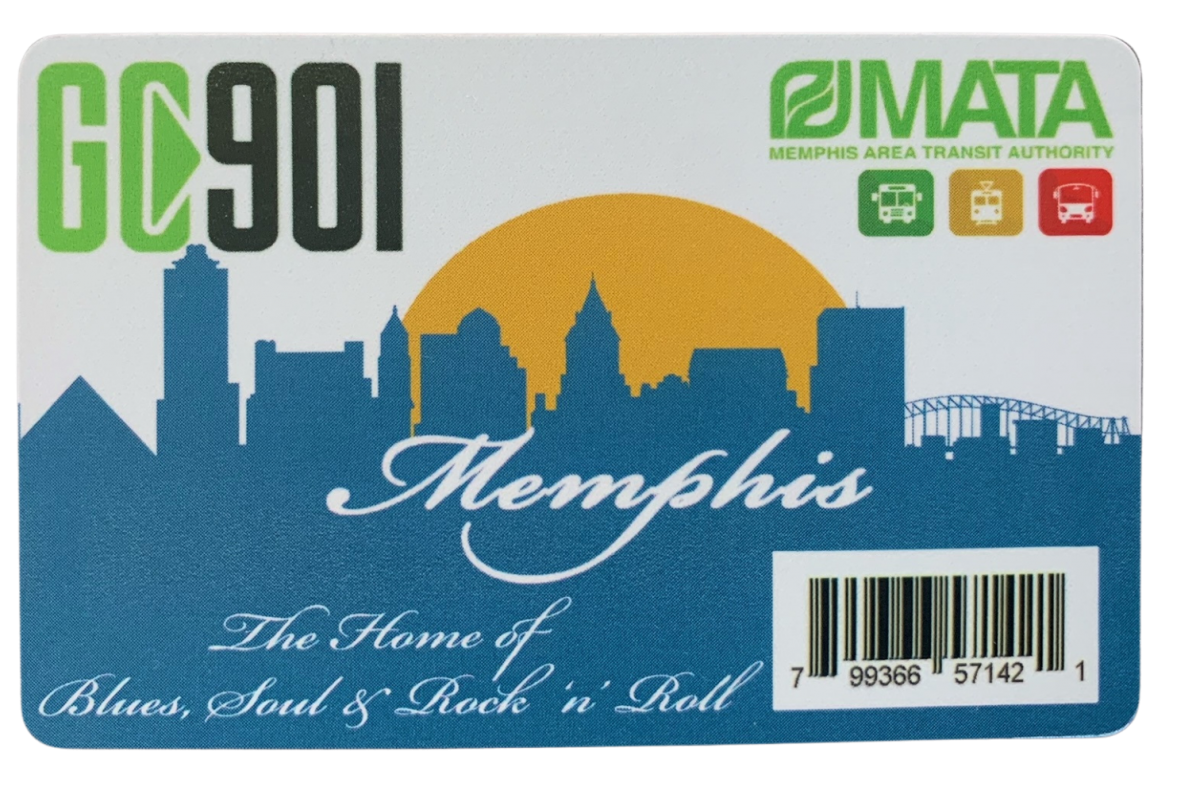
 Maya Smith
Maya Smith 
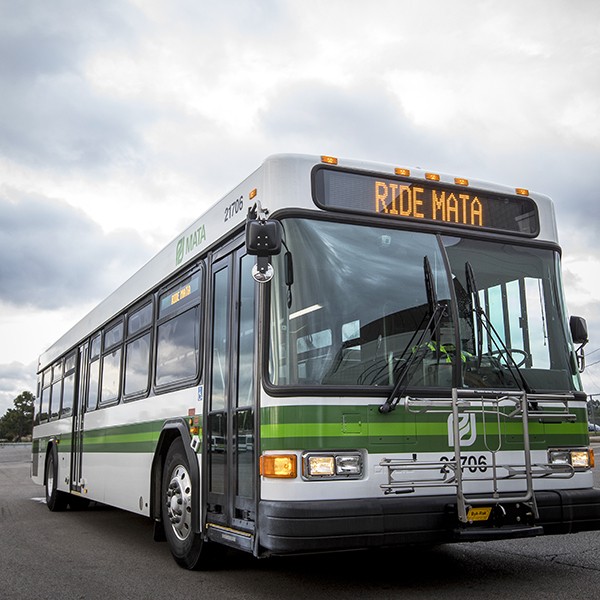 Justin Fox Burks
Justin Fox Burks 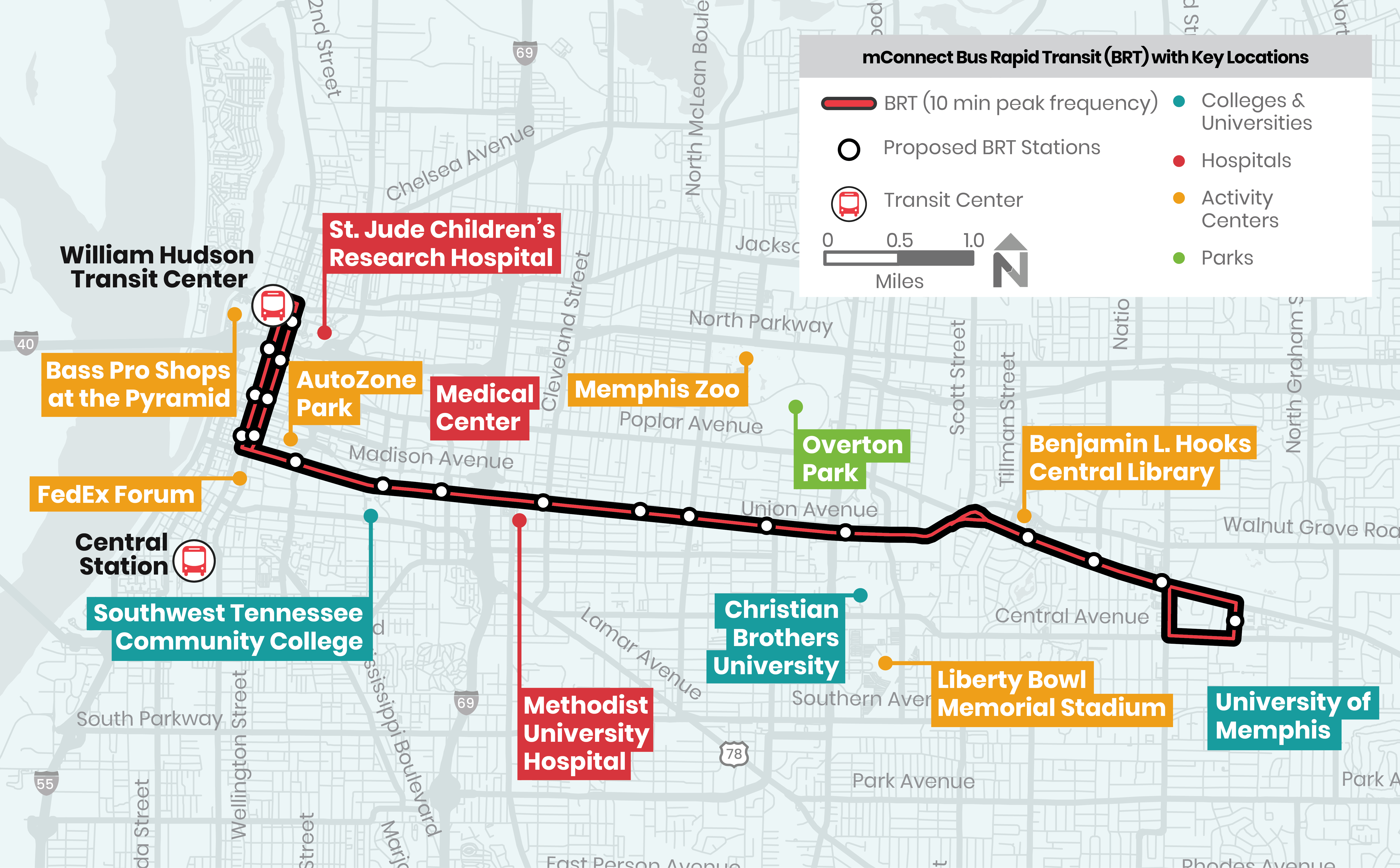
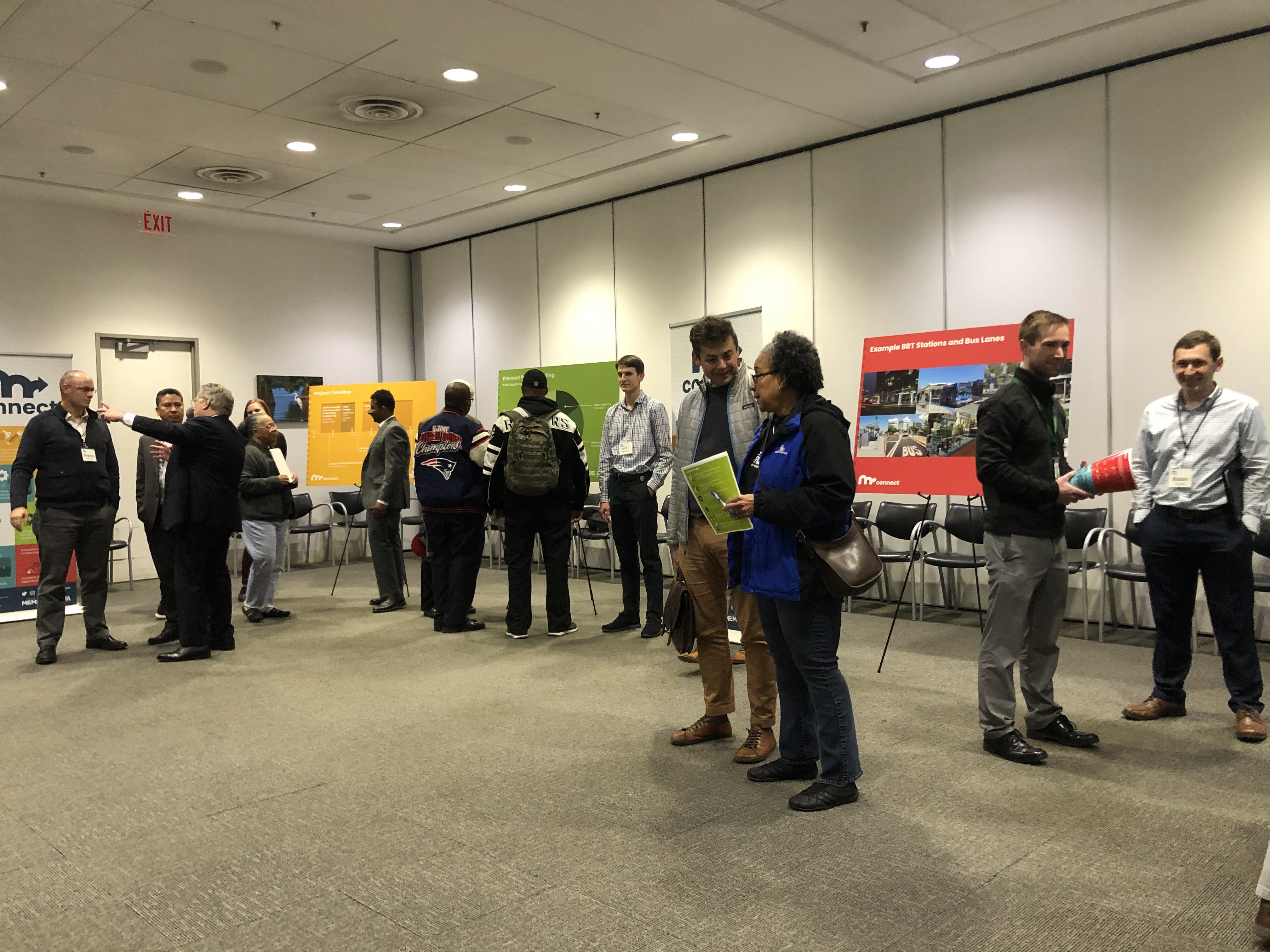
 Memphis Area Transit Authority
Memphis Area Transit Authority  Justin Fox Burks
Justin Fox Burks 
